Telecom Trends
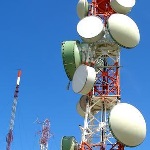 |
General Trends
The infrastructure that enables computer-to-computer communication is evolving very rapidly. Within the next decade, we expect to see several major changes to the global telecom infrastructure. Many of those changes will have a direct impact on professional practice. Here’s our list of the major trends.
- Note the continuing and accelerating trend to merge the telephone system with computers and computer networks.
- Advanced operating systems will make remote connectivity effortless. They will be able to control standard voice communications, answering machines, pagers, mobile phones, remote digital access (i.e. internet links to construction sites, clients and consultants etc.), as well as video conferencing.
- Note the increased use of wireless LAN’s within office buildings. Wireless technology is the underlying enabling technology that will allow ubiquitous computing to take hold. Wireless technology will insure unbroken or uninterrupted network access regardless of a user’s physical location. Note the basic paradigm shift from location dependent (i.e. fixed drop method) vs. location independent connection (i.e. mobile to base station method).
- Note the increased use of wireless modems for traveling outside of office. Note the marriage of computers to cell phone technology. Mobile users could connect to web via an ISP or directly to a company’s network via a remote access server.
- Note the emergence, consolidation and eventual dominance of national and international mobile telecom and paging systems markets in the near future by a handful of companies. This will have a direct impact on architectural and engineering firms by tying together all personnel in the same telecom system. Note the end of regional telecom companies. The emerging system will include both voice and data systems (voice, paging, video and computer data).
- Several competing high speed, high bandwidth satellite communications systems will be operational by the year 2010. As bandwidth increases, so will client expectations for more attentive service. With barriers to the quick dissemination of data all but eliminated, clients, contractors, and other members of the project team will expect team members to respond to queries very quickly. There will be a premium put on the speed with which information can be assembled, assessed and disseminated to other members of the project team.
- Note the convergence of mobile phones, Jini technology and the Internet. Jini technology allows small devices with embedded microprocessor chips to connect to the internet. In a related development, recent advances in mobile phone technology has resulted in the introduction of single chip phones. When single chip mobile phones are combined with Jini technology, the result is a “smart” device can be monitored and controlled very inexpensively over the internet. This will have a direct impact on the design and operation of “smart” building systems (especially HVAC, electrical, security and fire alarm systems). Telemetry from such smart devices will help control operating expenses.
- Internet savvy PDA’s and cell phones will make email messaging ubiquitous.
- Note the appearance of “data appliances” that can be added or unplugged from the network very easily.
- The international wireless communications market is highly fragmented. Many different regionally based technology standards are jockeying for dominance in the world market. In recent years, the lure of increased market share has spurred a great deal of technological development. Many manufacturers are working to make their proprietary system the de facto world standard. Other manufacturers are developing non proprietary systems that are compatible with as many different technologies as possible. Time will tell which strategy is ultimately successful.
|
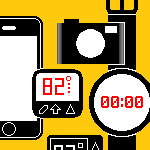 |
Communications Chameleons
Note the increased popularity of multipurpose wireless communications devices (a.k.a. communications chameleons). Communications chameleons are single devices that are capable of being used as cell phones, mobile email terminals, internet browsers, or Personal Digital Assistants (PDA’s). Depending on a user’s need and his or her proximity to a wireless phone system, these devices could be used as stand alone computers or as shared network appliances. Recent advances in voice recognition may soon make it possible to control these Communication Chameleons with natural speech. A sonic interface for Communication Chameleons seems like a natural fit.
|
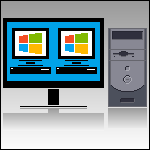 |
Telemetry, Remote Monitoring and Control
Cell phone technology will soon become indistinguishable from wireless computer networking technology. Advances in chip manufacturing technology will allow higher and higher chip densities to be built into cell phones. Higher chip density translates directly into increased computing power. Manufacturers are now capable of producing all the circuits necessary for a cell phone on a single chip. Such single chip cell phones are just reaching the market. In the near future, it is reasonable to expect that additional features will be built into these chips. As a chip’s feature list increases, it’s potential market will also increase. It is therefore reasonable to expect that equipment designers will place cell phone chips into a variety of different electronic devices that are not currently tied to the phone system. It is also likely that these electronic devices will be equipped with “Jini” technology. Electronic devices equipped with cell phones and enhanced with Jini technology will be able to access the Internet. Once a device has access to the Internet, it can be monitored and controlled remotely from anywhere in the world. Remote monitoring and control will enable facilities managers to consolidate their workforce and eliminate duplicate facilities. This in turn will have a direct impact on the type of mechanical and electrical systems that AEC industry designs and builds.
|
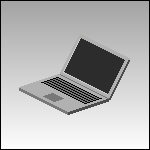 |
Mobile Computers
Note the increased popularity of small, mobile computers that come with embedded cell phones and are network ready as they come out the box. Advances in miniaturization will endow laptops and PDA’s with more and more computing power. Computers will shrink and become wearable. Tiny computers will become very popular.
|
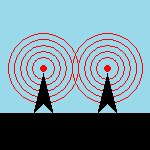 |
Wireless Communications Systems
The current wireless communications market can be characterized as follows:
- Increasing competition for market share within each segment of the industry.
- Increased consolidation within each market segment.
- Rapidly expanding worldwide market. The telecom market is expanding most dramatically within economies that do not have a well established land line infrastructure. (i.e. developing and third world economies).
- As markets in the industrialized world near saturation, the pace of growth slows.
- The price per minute of local and long distance air time continues to fall.
- Large investments in new technology. New systems are often overlaid on top of existing systems.
- Many different systems in use. Systems are often incompatible.
- The quest for market share has led companies to the adopt one of two different marketing approaches. The first attempts to grow market share by supporting the development of universal, non proprietary standards that can be used by any and all industry players. The second approach relies on proprietary standards and very aggressive marketing to overpower competitors in specific markets. Under such a scheme, competitors are often forced to adopt the proprietary standard or vacate the market.
- Wireless communications systems can be conceived of as bubble technology. Signals radiate outward from a transmission source to a receiving antenna. The effective radius of the signal (i.e. the bubble radius) is determined by radio frequency and transmission strength. Currently, there are three different size bubbles. The first is workstation size. The second is building size. The third is neighborhood size. Different technologies and standards are being marketed to optimize performance within each type of bubble.
|
(Previous Page)(Next Page)